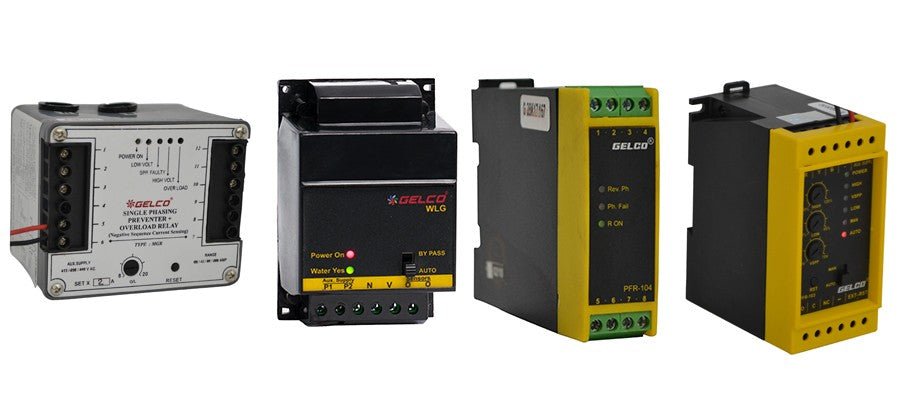All that you need to know about a Protection Relay
Be it our home or office or any commercial or industrial setup, we all wish for a smooth functioning electrical system. We are so dependent on the electrical system that a minute failure also hold the potential to put our lives at a standstill. To make our lives easier, Gelco comes with a wide range of protective relays that automatically detects any fault in the system and immediately disconnects the faulty circuit from the system to avoid any further damage.
Protection relays were first manufactured more than 100 years ago. Since then, the advancements in technology have altered the protection relays to a great deal. Modern relays are not only capable of isolating faulty elements from the system but also hold the capacity to measure various electrical configurations such as frequency, voltage, current, impedance, and phase angles for any malfunctioning. Any change in the measurement of a variable transfers an immediate signal to the relay with its location and type. As a response to the signal, the relay automatically closes down the breaker’s trip circuit, isolating it from the system to avoid hampering the normal functioning of the entire system.
Type of Protective Relays
Based on the functionality, there are several kinds of protective relays available today. Some of the most common relays are:- Electromechanical relays: The earliest created relay type is still in use in the present time to mostly control high power electric devices. It functions using a magnetic field produced by an electromagnetic coil. It can typically manage a maximum of two performance parameters or protective functions.
- Overcurrent relays: The relay type functions only when the value of the current is greater than the relay setting time. The relay has a pick-up value and may start to operate when the current measurement and quantity exceed that value.
- Directional relays: The relay type functions for a specific direction of current flow. When a current flows in the opposite direction than the directed current, this activates the directional relay. More often, the directional relay is paired with other kinds for more efficient functioning.
- Differential relays: The relay type functions when there is a difference between two or more similar electrical quantities that exceed a predetermined value. It basically examines the magnitude and values of the entering current and the leaving current. If the value of the leaving current exceeds the entering current, the relay gets activated. The two common types are Current Balance Differential Relay and Voltage Balance Differential Relay.
- Distance relays: The relay type depends on the distance of the source/feeder point and the point where the fault occurs. It responds to the changes in the ratio of voltages and currents. The relay is often used in the protection of the transmission lines.
- Pilot relays: The relay type comes in handy to identify whether the fault is inside or outside of the protected line. It acts more like a communication channel between relays, at different substations, to transmit the “trip or don’t trip” signal. The intent here is to trip the circuit breakers as fast as possible.
Based on the common types discussed above, a protection relay may function based on differences in impedance, voltage, current, and other aspects and parameters of an electrical system. But largely, it acts as a sensor that identifies any fault and interferes in the system functioning to break the circuit. The advancements and growing technical expertise have led to various innovations and today, one can find various combinations of protection relays that may include many different sensors. Even in regards to functionality, the protective relay varieties may sense a variety of faults and issues. But the above discussed are the most common systems employed in a variety of scenarios!















